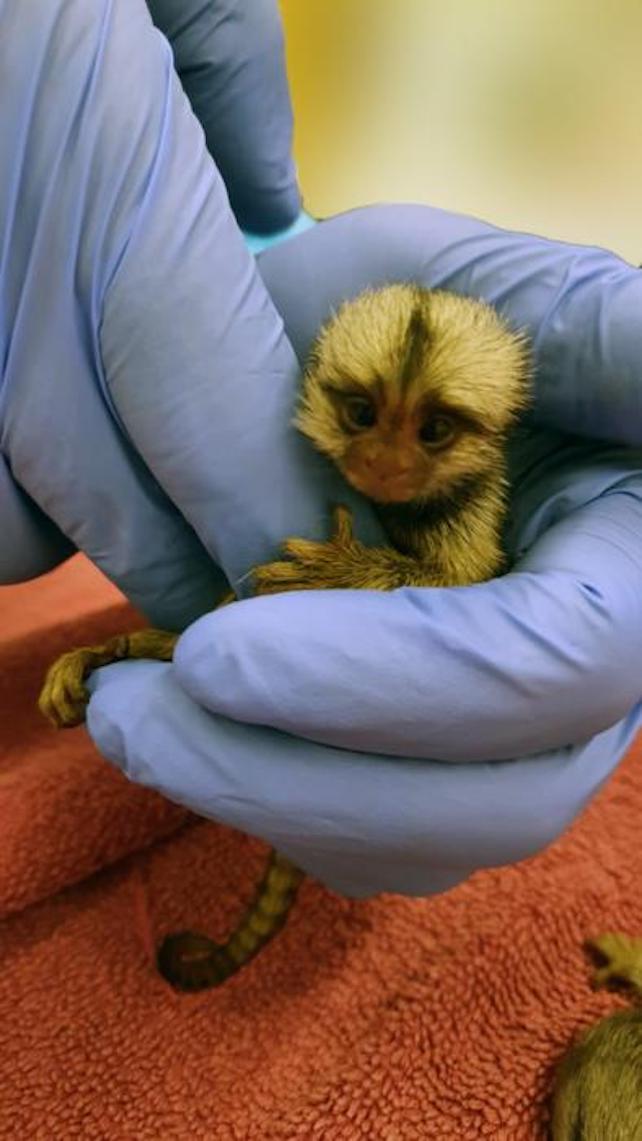ARTICLE AD
Marmosets are small, adorable monkeys native to South America, but it would be unwise to underestimate them. These diminutive simians are full of surprises, living sophisticated social lives in treetop troops.
According to a new study, members of marmoset troops even call each other by names, a behavior only previously documented in three famously brainy animals: elephants, dolphins, and humans.
Marmosets use specific vocalizations, known as "phee calls," to both identify and communicate with each other, the study's authors report.
A naming system like this is no trivial discovery in any species, considering how few wild animals are known to have one. But it's especially interesting to find this in a fellow primate, because until now, we were the only primate known to identify each other by name.
Of all primates, this ability has been discovered in distantly related monkeys, rather than something more closely related to us, like a great ape.
Yet in addition to shedding light on these distant relatives, the researchers say, the findings may also help us better understand the origins of language in our own ancestors.
To reveal the secrets of marmosets, the authors recorded natural conversations between pairs of primates, who could not see each other but could hear each other, as well as between a marmoset and a computer.
The researchers were listening for phee calls, a previously documented type of contact call the researchers suspected might also serve additional, undiscovered purposes.
Marmosets are known to use phee calls to form turn-taking dialogues, the researchers note, and the calls can reportedly also be encoded with details about whoever is producing them.
Due to the distinctive features and flexibility of phee calls, the researchers hypothesized that, during natural phee-call dialogues, marmosets might use phee calls to label each other. This could be part of a broader naming system, with labels possibly learned socially within troops.
Led by David Omer, an assistant professor with the Safra Center for Brain Sciences at the Hebrew University of Jerusalem, the researchers found that marmosets do indeed use distinctive phee calls to vocally label one another.
The monkeys also accurately perceived and responded to phee calls directed at them, the study found.
"This discovery highlights the complexity of social communication among marmosets," Omer says. "These calls are not just used for self-localization, as previously thought – marmosets use these specific calls to label and address specific individuals."
 One of the study subjects, a baby common marmoset (Callithrix jacchus) named Bareket (David Omer's Lab)
One of the study subjects, a baby common marmoset (Callithrix jacchus) named Bareket (David Omer's Lab)Troop members also use specific vocal labels to address each individual, the study found, and consistently use certain sound features to code specific names. This seems to echo aspects of human speech, including the use of vocal labels as names and the existence of localized dialects.
Everyone's name likely becomes common knowledge within a troop via social learning, the researchers report, and this is happening not just among younger or closely related monkeys.
The study found even unrelated adult marmosets can acquire name and pronunciation details from each other this way, suggesting they learn both names and dialects from fellow troop members in the wild.
Marmosets inhabit thick rainforest canopies across a swath of South America, where vocally labeling each individual troop member might offer an adaptive advantage, the researchers note.
Visibility is limited in these dense treetops, but using vocal labels as names might help the monkeys maintain social bonds and group cohesion while spending significant amounts of time out of each other's sight.
In fact, this might even hint at how some of our prehuman ancestors developed social communication and language.
"Marmosets live in small monogamous family groups and take care of their young together, much like humans do," Omer says. "These similarities suggest that they faced comparable evolutionary social challenges to our early pre-linguistic ancestors, which might have led them to develop similar communicating methods."
The study was published in Science.

 2 months ago
20
2 months ago
20 

